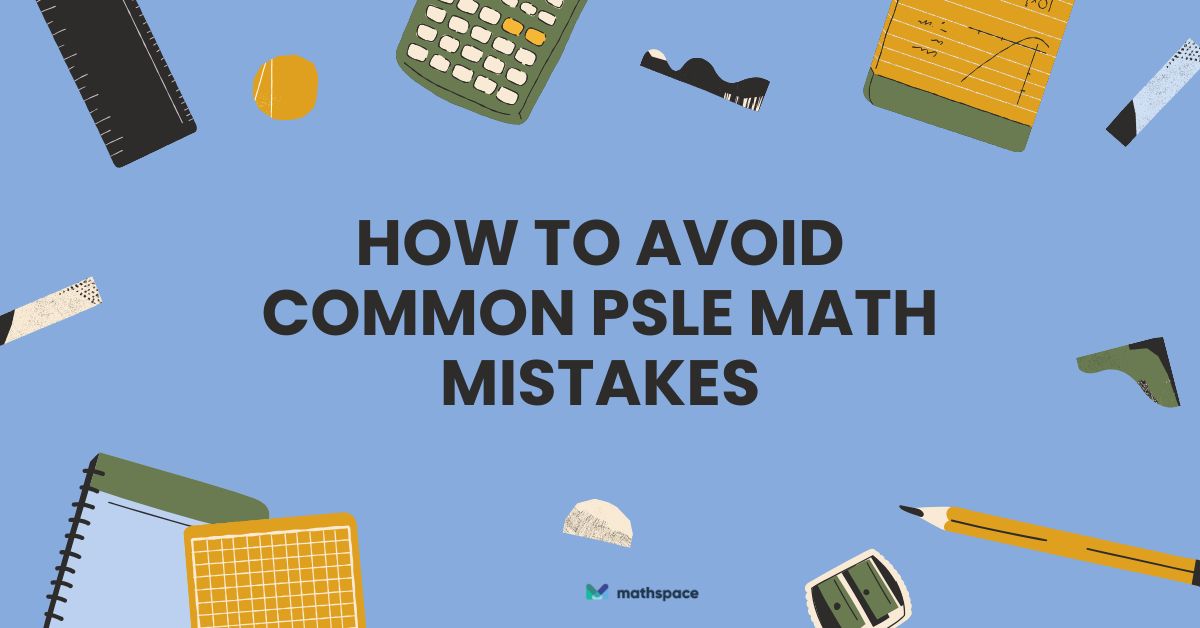The PSLE (Primary School Leaving Examination) is a significant milestone for Singaporean students. Mathematics, in particular, often causes anxiety. While mastering concepts is essential, many students lose marks due to avoidable mistakes. This comprehensive guide identifies common errors and provides practical strategies to improve accuracy and boost scores.
Careless Errors: The Silent Score Killers
These are mistakes not stemming from a lack of understanding but from inattention to detail:
Incorrect Copying of Numbers
Students might miscopy numbers from the question paper to their workings. Solution: Develop a habit of double-checking numbers before starting calculations. Consider underlining or circling key numbers to ensure accuracy. Neat handwriting is paramount.
Misreading Questions
Failing to fully understand the question before attempting it is a significant problem. Students might miss crucial keywords or misinterpret the problem’s context. Solution: Read the question multiple times, highlighting key information and underlining the question’s core demand. Rephrasing the question in your own words can help clarify understanding.
Errors in Calculation
Simple arithmetic errors, like incorrect addition, subtraction, multiplication, or division, can lead to substantial mark loss. Solution: Practice basic arithmetic regularly to improve speed and accuracy. Use estimation to check answers – a rough estimate can quickly identify major discrepancies. Breaking down complex calculations into smaller steps can improve accuracy.
Units and Conversions
Forgetting to include units or making errors in unit conversions (e.g., meters to centimeters) is a common mistake. Solution: Always include units in your answers and clearly show the steps of any unit conversions. Double-check your answers to see if they are logically plausible within the context of the question.
Leaving Answers Unsimplified
Failing to simplify fractions or expressions to their simplest forms results in lost marks. Solution: Familiarize yourself with simplification techniques for fractions, decimals, and algebraic expressions. Practice simplifying answers regularly.
Conceptual Mistakes: Understanding the Underlying Issues
These errors indicate a deeper misunderstanding of the mathematical concepts involved:
Misunderstanding of Word Problems
Many students struggle to translate word problems into mathematical equations. Solution: Practice different types of word problems regularly. Learn to identify keywords that indicate mathematical operations (e.g., “more than,” “less than,” “of”). Develop a systematic approach to analyzing and solving word problems, such as drawing diagrams or using models.
Incorrect Application of Formulas
Using the wrong formula or applying a formula incorrectly leads to incorrect answers. Solution: Memorize formulas thoroughly and understand their derivations. Practice using different formulas in varied problem contexts. Double-check which formula is appropriate for the given problem.
Problems with Ratio and Proportion
These concepts often appear in challenging PSLE questions. Solution: Master the basic principles of ratios and proportions. Practice problems involving different scenarios, such as sharing quantities proportionally and solving problems involving scales.
Fractions, Decimals, and Percentages
Confusion between fractions, decimals, and percentages often leads to errors. Solution: Strengthen your understanding of the relationships between these three concepts. Practice converting between them fluently.
Strategic Errors: Approaching the Exam Inefficiently
Poor Time Management
Running out of time often forces students to rush through questions, increasing the likelihood of careless errors. Solution: Practice solving past papers under timed conditions. Learn to allocate time effectively to different questions based on their difficulty. Prioritize questions you can solve quickly and accurately first.
Ignoring Checkpoints
Not reviewing answers after completion significantly increases error rates. Solution: Always take the time to review your work, checking for careless mistakes and ensuring answers are complete. Compare your answers to your estimates to catch gross calculation errors.
Not Showing Workings
Failing to show your working steps prevents markers from awarding partial credit even if the final answer is incorrect due to a minor error. Solution: Develop a habit of clearly showing your workings. Even if the final answer is wrong, partial marks can be awarded for correct steps.
How to Improve
Practice Regularly: Consistent practice is key. Solve a variety of problems regularly, focusing on areas where you struggle.
Seek Clarification: Don’t hesitate to ask your teacher or tutor if you are unclear on a concept.
Analyze Mistakes: When you make a mistake, analyze it carefully to understand the cause. This helps you avoid repeating the same error.
Use Past Papers: Practice with past PSLE Maths papers to familiarize yourself with the exam format and question types.
Focus on Accuracy: Prioritize accuracy over speed, especially when practicing.
Develop a Systematic Approach: Develop a systematic approach to solving problems, breaking down complex problems into smaller, manageable parts.
Positive Mindset: Believe in your abilities and maintain a positive attitude towards the exam. Anxiety can negatively impact performance.
By addressing these common mistakes and implementing the suggested strategies, students can significantly improve their PSLE Math performance and achieve exam success. Remember, careful planning, consistent practice, and a positive mindset are crucial for achieving your academic goals. Visit us at Explico for more information!


